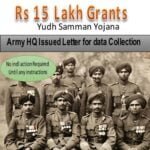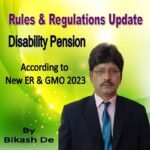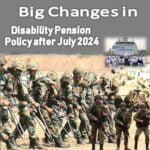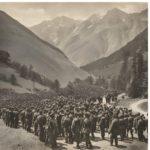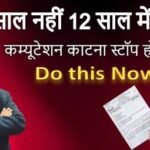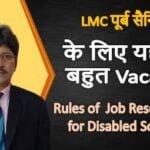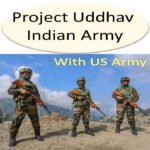Author : Bikash De – Editor, ESM Info Club
🔹 Introduction: Honouring Those Who Serve Twice
Ex-Servicemen are among the rarest category of citizens who serve the nation twice—once on the frontlines defending sovereignty, and again through civil re-employment, contributing to the functioning of government and public systems.
Despite their unmatched discipline, experience, and sacrifice, re-employed Ex-Servicemen (ESM), especially those below commissioned rank (PBOR), face career stagnation in civil employment due to the absence of any promotional framework tailored to their background and service conditions.
There is currently no vertical reservation or structured career progression policy for re-employed veterans—leaving them at the bottom of civil seniority, with little to no growth prospects, irrespective of their meritorious service.
🔹 Ground Realities: The Struggles of Re-Employed ESM
- Retire in early 30s–40s after combat service, harsh climates, separation from families
- Re-enter government service through limited re-employment quotas
- Face age-related disadvantages in departmental exams
- Carry service-related disabilities (often non-pensionable)
- Disadvantaged against younger, academically competitive civilian peers
- Remain at entry-level posts, often in Group C, till retirement without promotion
This systemic oversight is a violation of equity and undermines the principles of justice for those who have already served the nation in the most difficult conditions.
🔹 Constitutional and Legal Justification
The demand for a distinct vertical promotional quota is firmly anchored in the Constitution of India:
- Article 16(1) – Equal opportunity must be substantive, not merely formal.
- Article 16(4) & 16(4A) – Provision for special treatment of underrepresented classes in recruitment and promotion.
- Article 46 – Directive to promote weaker sections economically and prevent exploitation.
- Article 39 (a) & (e) – Upholds the right to dignified livelihood and prevention of age-unsuitable job stagnation.
These provisions justify the creation of a distinct promotional pathway for re-employed EXS within the legal framework without affecting the current SC/ST/OBC/EWS reservation ceilings.
🔹 Judicial Precedent
In Anuj Kumar v. Union of India (2023), the Supreme Court ruled that persons with disabilities are entitled not just to reservation in appointments but also in promotions. This landmark judgment reaffirms that:
“Mere entry into service is not enough. Career advancement is essential for dignity and justice.“
Re-employed veterans too deserve this recognition—being a structurally disadvantaged class due to early retirement, trauma, and age-induced limitations.
🔹 International Best Practices
Countries across the world actively support veterans’ civil reintegration and career growth:
- 🇺🇸 United States: Veterans receive extra marks in promotions. Military service counts toward seniority and benefits under VEOA and FedsHireVets.
- 🇨🇦 Canada: Veterans Hiring Act ensures priority in promotions; military service counted toward civil seniority.
- 🇬🇧 UK: Under the Armed Forces Covenant, promotion criteria are adjusted to reflect military leadership.
- 🇦🇺 Australia: Veterans’ Employment Program acknowledges military service for internal mobility and promotion in public services.
Should India—home to one of the world’s largest volunteer armies—not follow suit?
🔹 Global Norms: United Nations Perspective
The UN, UNDP, and UNSC resolutions reinforce the duty of the State to ensure:
- Dignified reintegration of ex-combatants
- Equal access to opportunity and career growth
- Prevention of post-service marginalization
These global frameworks may be non-binding, but they highlight a universally accepted moral obligation that democratic nations must uphold.
🔹 Our Demands
In light of the above facts, we respectfully urge the Hon’ble Government to:
- Create a distinct vertical promotion quota for re-employed Ex-Servicemen in Government services and PSUs.
- Pilot implementation in departments with large ESM workforce (e.g., Defence Civilian Offices, Railways, EPFO, PSBs).
- Institutionalize age relaxation and promotion rules tailored to ESM career timelines.
- Ensure that these provisions do not interfere with existing reservations for SC/ST/OBC/EWS categories.
🔹 The Moral Imperative
It is a paradox that the same soldiers who retire early after risking life and limb are forced to retire again—this time at the lowest civil ranks, without promotion, despite continuous service.
This is not a demand for privilege—this is a plea for dignity, equality, and justice.
We bore the bullets, so others could bear the files.
We stood in the cold, so the country could sleep warm.
Now we ask—not for rewards—but for a fair chance to rise.
🔹 Conclusion
India takes pride in saluting its soldiers. But now is the time to institutionalize that salute into policy.
A distinct vertical promotional quota for re-employed Ex-Servicemen is not just justified—it is long overdue.
We urge the Government, policymakers, and administrative heads to take this representation seriously and urgently, and begin a new chapter in veteran justice and public sector reform.





